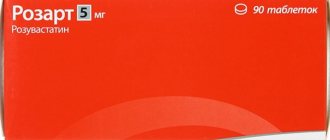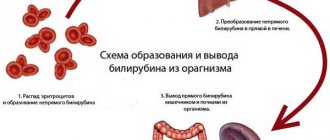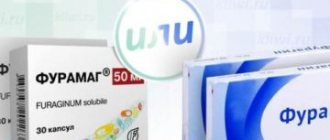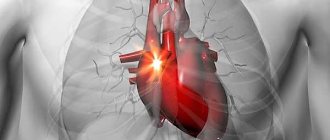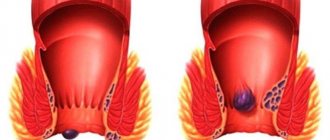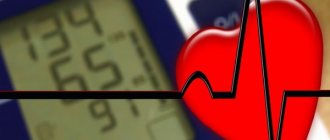Telzap is a drug (tablets) (pharmacological group - drugs that affect the renin-angiotensin system). Important features from the instructions for use:
How to dissolve vascular plaques, normalize blood circulation, blood pressure and forget the way to the pharmacy
- Sold only with a doctor's prescription
- During pregnancy: contraindicated
- When breastfeeding: contraindicated
- In childhood: contraindicated
- For liver dysfunction: with caution
- If renal function is impaired: with caution
- In old age: possible
Release form and composition
The drug is available in the form of film-coated tablets: yellowish to almost white, oblong, biconvex; 40 mg - with a dividing line on each side, 80 mg - engraved “80” on one side (10 pieces in blisters, in a cardboard pack there are 3, 6 or 9 blisters and instructions for using Telzap).
1 tablet contains:
- active ingredient: telmisartan – 40 mg or 80 mg;
- auxiliary components: povidone 25, meglumine, sodium hydroxide, sorbitol, magnesium stearate.
Analogs
Analogues of Telmisartan:
- Writer;
- Teseo;
- Micardis;
- Telpres;
- Hypotel;
- Tsart;
- Telmista;
- Twinsta;
- Telmisartan-Teva;
- Telsartan.
The most famous and frequently used drugs on this list are Micardis and Telmista.
Pharmacological properties
Pharmacodynamics
Telzap is an antihypertensive drug; its active ingredient is telmisartan, a specific angiotensin II receptor antagonist (AT1 subtype). Telmisartan has a high degree of affinity for AT1 (angiotensin) receptors, through which the action of angiotensin II is realized. Without having an agonist effect on the receptor, it displaces angiotensin II from its connection with it and binds only to the AT1 receptor subtype of angiotensin II. Telmisartan has no affinity for other angiotensin receptors (including AT2 receptors). Their functional significance and the effect of possible excessive stimulation with angiotensin II have not been studied. Telmisartan reduces the level of aldosterone in the blood plasma, does not block ion channels, does not reduce renin activity, and does not inhibit the action of angiotensin-converting enzyme (kininase II), which catalyzes the destruction of bradykinin. This allows you to avoid the development of a dry cough and other side effects caused by the action of bradykinin.
For essential hypertension, taking Telzap at a dose of 80 mg blocks the hypertensive effect of angiotensin II. The hypotensive effect after the first dose of telmisartan occurs within 3 hours and persists for 24 hours, remaining clinically significant for up to 48 hours. A pronounced antihypertensive effect is achieved after 28–56 days of regular use of the drug.
In arterial hypertension, telmisartan reduces systolic and diastolic blood pressure (BP) without affecting heart rate (HR).
Abrupt withdrawal of Telzap is not accompanied by the development of withdrawal syndrome; blood pressure gradually returns to its original values over several days.
The antihypertensive effect of telmisartan is comparable to the effect of such antihypertensive drugs as amlodipine, enalapril, hydrochlorothiazide, atenolol and lisinopril, but with the use of telmisartan there is a lower likelihood of dry cough, in contrast to angiotensin-converting enzyme (ACE) inhibitors.
The use of telmisartan for the prevention of cardiovascular disease in adult patients (age 55 years and older) with transient ischemic attack, coronary artery disease, peripheral arterial disease, stroke, or complications of type 2 diabetes mellitus (including retinopathy, left ventricular hypertrophy, macro- or A history of microalbuminuria contributed to a reduction in the composite endpoint of hospitalization for chronic heart failure, cardiovascular mortality, myocardial infarction, or nonfatal stroke. Telmisartan also exhibits a similar effect to ramipril in reducing the incidence of secondary endpoints: cardiovascular mortality, myocardial infarction or non-fatal stroke. In contrast to ramipril, when taking telmisartan, the incidence of dry cough and angioedema is lower, and arterial hypotension is higher.
Pharmacokinetics
After oral administration, absorption of telmisartan from the gastrointestinal tract occurs quickly, its bioavailability is 50%. Simultaneous food intake causes a decrease in AUC (total plasma concentration), but within three hours the concentration of telmisartan in blood plasma levels off.
Compared to men, in women Cmax (maximum concentration in blood plasma) is 3 times higher, and AUC is approximately 2 times higher, but this does not have a significant effect on the effectiveness of Telzap.
There is no linear relationship between the dose and plasma concentration of the drug. When using daily doses above 40 mg, Cmax and AUC change disproportionately with increasing dose.
Binding to blood plasma proteins (mainly albumin and alpha1-acid glycoprotein) is more than 99.5%.
The average apparent volume of distribution is 500 l.
Telmisartan is metabolized by conjugation with glucuronic acid; the conjugate has no pharmacological activity.
T1/2 (half-life) – more than 20 hours. It is excreted unchanged mainly (99%) through the intestines, less than 1% is excreted by the kidneys.
Total plasma clearance is about 1000 ml/min, hepatic blood flow is up to 1500 ml/min.
In mild to moderate renal impairment, as well as in patients over 65 years of age, the pharmacokinetics of telmisartan are not affected, so no dose adjustment is required.
In severe renal failure and for patients on hemodialysis, the initial dose should not exceed 20 mg per day.
Telmisartan is not eliminated by hemodialysis.
For mild to moderate liver dysfunction (classes A and B according to the Child-Pugh classification), a daily dose of up to 40 mg should be used.
Composition and properties
There are two forms of Telzap on sale today, which differ in composition and some properties.
Telzap
Telzap tablets contain:
- active ingredients: telmisartan 40 mg;
- additional substances: sorbitol – 162.2 mg, meglumine – 12 mg, hydroxide – 3.4 mg, povidone – 20 mg, magnesium stearate – 2.4 mg.
Telzap Plus
The composition of Telzap Plus tablets includes:
- active ingredients: telmisartan – 80 mg, hydrochlorothiazide – 12.5 mg;
- additional components: sorbitol – 348.3 mg, sodium hydroxide – 6.8 mg, povidone – 25.4 mg, magnesium stearate – 4.9 mg.
Hydrochlorothiazide is a diuretic that can more effectively lower blood pressure. In addition, the combined drug can significantly reduce the load on the gastrointestinal tract.
Pharmacodynamics and pharmacokinetics
The general effect of the drug on the body is the elimination of arterial hypertension and stabilization of blood pressure. With regular use of the medicine, a stable hypotensive effect is achieved.
Telmisartan is an angiotensin II receptor antagonist. The active substance blocks the connection of angiotensin II with AT1 receptors. The hypotensive effect is observed 3 hours after taking telmisartan orally. Its duration is more than 24 hours, and it intensifies in the last 4 hours before taking the next dose.
Maximum normalization of blood pressure is observed after 4-8 weeks of regular use of the medicine and persists for a long time with long-term therapy. The drug does not affect heart rate. If treatment is suddenly stopped, blood pressure slowly returns to primary values, but without the development of withdrawal syndrome.
Mechanism of action
Telmisartan is rapidly absorbed into the blood. Its maximum concentration in the blood is observed 30-90 minutes after the substance enters the body. The effect is slightly reduced when eating. After 3 hours from the moment of administration, the concentration of the substance in the blood reaches the same levels, regardless of how the tablets were taken: on an empty stomach or with food.
The main part of the dose is excreted with intestinal bile (more than 97%), and a small amount of the substance is processed by the kidneys (less than 2%). The elimination time from the body is more than 20 hours.
Similar means
Telzap analogues are prescribed in case of intolerance to any components of the drug. Similar active ingredients are found in the following medications:
- Micardis is an antihypertensive drug from an Austrian manufacturer. The average cost is about 1000 rubles.
- Telsartan is a budget price tablet manufactured in India. The average cost is 380 rubles.
- Telmista is a product of the Slovenian company KRKA, the average cost of which is 370 rubles.
- Lozap - tablets from the Czech company Zentiva. The average price is 750 rubles for 1 package.
- Losartan is produced by various countries and companies, the cost depends on the manufacturer: from 110 rubles for Israeli tablets from Teva, to 750 rubles for Czech products from Zentiva.
Contraindications
- severe liver dysfunction (class C according to the Child-Pugh classification);
- obstructive diseases of the biliary tract, cholestasis;
- simultaneous use of aliskiren in severe renal impairment [GFR (glomerular filtration rate) less than 60 ml/min/1.73 m2 body surface] or diabetes mellitus;
- concomitant therapy with angiotensin-converting enzyme (ACE) inhibitors in patients with diabetic nephropathy;
- hereditary fructose intolerance;
- pregnancy period;
- breast-feeding;
- age under 18 years;
- hypersensitivity to the components of the drug.
Telzap should be prescribed with caution in severe chronic heart failure, hypertrophic obstructive cardiomyopathy, aortic and mitral valve stenosis, renal dysfunction, bilateral renal artery stenosis, artery stenosis of the only functioning kidney, mild to moderate liver dysfunction, decreased circulating blood volume (CBV). ) against the background of limited consumption of table salt, diarrhea, vomiting or taking diuretics, hyperkalemia, hyponatremia, primary hyperaldosteronism, in the period after kidney transplantation, use in patients of the Negroid race.
Indications for use
Telmisartan blood pressure tablets are prescribed for the following pathologies:
- hypertension;
- prevention of cardiovascular diseases in people of the older age category (from 55 years);
- rehabilitation of patients who have suffered a stroke or heart attack.
Doctors strongly do not recommend self-treatment with this medication.
Telzap, instructions for use: method and dosage
Telzap tablets are taken orally with a sufficient amount of liquid, regardless of meals.
The frequency of taking the drug is 1 time per day.
Recommended daily dosage:
- arterial hypertension: initial dose – 20–40 mg. If there is no sufficient antihypertensive effect after 28–56 days of therapy, the initial dose can be increased. The maximum daily dose is 80 mg. As an alternative, a combination of Telzap with thiazide diuretics (including hydrochlorothiazide) is indicated;
- reduction in mortality and incidence of cardiovascular diseases: 80 mg, at the beginning of treatment it is necessary to control blood pressure levels. If necessary, antihypertensive therapy should be adjusted.
In severe renal failure or patients on hemodialysis, it is recommended to use an initial daily dose of no more than 20 mg.
For mild to moderate renal impairment, no dose adjustment is required.
For mild to moderate liver failure (classes A and B according to the Child-Pugh classification), the daily dose of Telzapa should not exceed 40 mg.
Video on the topic
Recommendations regarding the choice of medications for hypertension in the video:
Thus, you can hear a lot of positive reviews about Telmisartan as a very effective drug that quickly normalizes blood pressure and has a long-lasting effect. At the same time, the medicine is not suitable for everyone due to the presence of contraindications and a large number of side effects. However, they are not noted so often.
The information on the MyMedNews.ru website is for reference and general information, collected from publicly available sources and cannot serve as a basis for making a decision on the use of medications in the course of treatment.
MyMedNews.ru
And we also have
Anti-pressure tablets are strong and most frequently prescribed: list of drugs and features of their use
Side effects
- general disorders: infrequently – asthenia, chest pain; rarely – influenza-like syndrome;
- diseases of infectious and parasitic origin: uncommon - urinary tract infections (including cystitis), upper respiratory tract infections (including sinusitis, pharyngitis); rarely - sepsis (including death);
- from the cardiovascular system: infrequently – bradycardia, orthostatic hypotension, marked decrease in blood pressure; rarely - tachycardia;
- from the lymphatic system and blood: infrequently – anemia; rarely – thrombocytopenia, eosinophilia;
- from the immune system: rarely - hypersensitivity reactions, anaphylactic reactions;
- from the mental side: infrequently – depression, insomnia; rarely – anxiety;
- on the part of metabolism and nutrition: infrequently – hyperkalemia; rarely – hypoglycemia due to diabetes mellitus;
- from the gastrointestinal tract: infrequently - abdominal pain, vomiting, dyspepsia, flatulence, diarrhea; rarely - dry mouth, impaired taste, discomfort in the stomach;
- from the hepatobiliary system: rarely - liver damage, functional disorders of the liver;
- from the nervous system: infrequently – fainting; rarely - drowsiness;
- from the organ of hearing, labyrinthine disorders: infrequently – vertigo;
- from the organ of vision: visual disorders;
- from the respiratory system, chest and mediastinal organs: infrequently – cough, shortness of breath; very rarely - interstitial lung disease;
- dermatological reactions: uncommon – itching, skin rash, hyperhidrosis; rarely - drug rash, urticaria, erythema, eczema, toxic skin rash, angioedema (including fatal);
- from the urinary system: infrequently - impaired renal function, acute renal failure;
- from the musculoskeletal system and connective tissue: infrequently - muscle spasms, back pain (sciatica), myalgia; rarely – pain in the limbs, arthralgia, tendon pain (tendenitis-like syndrome);
- laboratory parameters: infrequently - increased creatinine levels in blood plasma; rarely - a decrease in hemoglobin content in the blood plasma, an increase in the activity of liver enzymes and creatine phosphokinase, an increase in the concentration of uric acid in the blood plasma.
Side effects
The drug is well tolerated by patients, but has a fairly impressive list of possible adverse reactions.
Rarely happen:
- decrease in hemoglobin level in the blood;
- failure of sleep and wakefulness;
- anxiety, loss of strength, worsening mood;
- lack of coordination;
- loss of consciousness;
- slow heart rate;
- sudden rapid decrease in blood pressure;
- dyspnea;
- failure of breathing rhythm;
- painful cramps in the abdominal area;
- gastrointestinal disorders - diarrhea, nausea, vomiting;
- an increase in the level of creatinine in the body, which indicates a malfunction of the kidneys;
- pain in muscle tissue;
- involuntary contractions of the calf muscles;
- hives and severe itching;
- decreased concentration;
- headache;
- infections similar to symptoms of ARVI or influenza;
- hyperhidrosis;
- an increase in potassium concentration in the body, which can lead to arrhythmia;
- pain and tightness in the chest;
Very rare violations include:
- blood poisoning;
- infectious processes of the genitourinary system (cystitis) and respiratory tract;
- ENT infections – pharyngitis, sinusitis;
- a decrease in platelet levels, which can cause bleeding;
- blurred vision;
- increased heart rate;
- a sharp decrease in pressure when changing position (when getting out of bed);
- flatulence, belching;
- dry mouth;
- liver dysfunction and increased concentrations of liver enzymes in the bloodstream;
- hyperuricemia, which can cause gout;
- redness of the skin;
- Quincke's edema;
- eczema;
Reactions that occur extremely rarely in patients:
- inflammatory processes in tendon tissues;
- increased concentration of eosinophils in the body;
If you notice one or more of the above symptoms, you should immediately stop taking the drug and consult a doctor.
Overdose
Symptoms: marked decrease in blood pressure, tachycardia, dizziness, bradycardia, increased serum creatinine concentration, acute renal failure.
Treatment: immediate gastric lavage, artificial vomiting, taking activated charcoal. The severity of symptoms and the patient's condition should be carefully monitored. Prescribe symptomatic and supportive therapy. It is important to ensure regular blood testing for electrolytes and plasma creatinine levels. If there is a pronounced decrease in blood pressure, the patient should be placed with his legs elevated. Carry out measures to replenish blood volume and electrolytes.
The use of hemodialysis is inappropriate.
special instructions
When prescribing Telzap to patients with bilateral renal artery stenosis or stenosis of the artery of a single functioning kidney, it should be taken into account that taking the drug may cause an increased risk of severe arterial hypotension and renal failure.
Treatment with the drug should be started only after the existing deficiency of bcc and/or sodium content in the blood plasma has been eliminated.
The use of Telzap in patients with impaired renal function is recommended to be accompanied by periodic monitoring of potassium and creatinine levels in the blood plasma.
Inhibition of the RAAS (renin-aldosterone-angiotensin system) may occur in patients predisposed to this and when telmisartan is taken concomitantly with other RAAS antagonists. It may cause hypotension, syncope, hyperkalemia, and impaired renal function (including acute renal failure).
In chronic heart failure, kidney disease or other pathologies with a predominant dependence on the activity of the RAAS, the administration of Telzapa can cause the development of acute arterial hypotension, hyperazotemia, oliguria, and in rare cases, acute renal failure.
In case of primary hyperaldosteronism, the use of the drug is ineffective.
During treatment with telmisartan, hypoglycemia may occur in diabetic patients receiving insulin or oral hypoglycemic agents, so careful monitoring of blood glucose levels is required. If necessary, the dose of insulin or hypoglycemic agent should be adjusted.
Particular caution should be taken into account when prescribing Telzap to patients with concomitant diseases such as renal failure, diabetes mellitus, patients on concomitant therapy with drugs that cause an increase in potassium levels in the blood plasma, elderly patients (over 70 years of age), since these categories of patients are at high risk of developing hyperkalemia, including death.
During the period of treatment with the drug, simultaneous use of other medications should be carried out only as prescribed by the attending physician.
An excessive decrease in blood pressure due to ischemic cardiomyopathy or coronary heart disease can lead to the development of myocardial infarction or stroke.
In patients of the Negroid race, a less effective lowering of blood pressure is observed.
Impact on the ability to drive vehicles and complex mechanisms
While taking Telzap, it is recommended to be careful when driving vehicles and machinery due to the possibility of dizziness and drowsiness.
Pharmaceutical properties
The drug has an antihypertensive effect. Provides inhibition of angiotensin II receptors. Depending on the portions, it can block the pressor effect of angiotensin II hormone, reduce the amount of aldosterone in the blood, and reduce the production of sodium and its derivatives.
Telmisartan provides nephroprotective action by reducing the degree of albuminuria. It reduces blood flow in the kidneys by one tenth, but does not have a negative effect on glomerular filtration. In large dosages, Telmisartan can reduce the severity of hypertrophic changes in the myocardium. In patients with hypertension, a decrease in systolic and diastolic blood pressure is ensured without affecting the heart rate.
For impaired renal function
The use of Telzap is contraindicated in patients with renal failure (GFR less than 60 ml/min/1.73 m2) who are on concomitant therapy with aliskiren.
Telzap should be prescribed with caution in case of impaired renal function, bilateral renal artery stenosis, or stenosis of the artery of a single functioning kidney.
In severe renal failure and patients on hemodialysis, it is recommended to use an initial daily dose of no more than 20 mg.
For mild to moderate renal impairment, no dose adjustment is required.
Drug interactions
With simultaneous use of Telzap:
- aliskiren: in patients with renal failure or diabetes mellitus, combination therapy with telmisartan and aliskiren leads to double blockade of the RAAS, resulting in an increased incidence of adverse events such as arterial hypotension, hyperkalemia and renal dysfunction;
- ACE inhibitors: in patients with diabetic nephropathy, during concomitant therapy with ACE inhibitors, double blockade of the RAAS occurs, therefore the combination of telmisartan and ACE inhibitors is contraindicated;
- Potassium-sparing diuretics (including spironolactone, eplerenone, amiloride, triamterene), potassium-containing dietary supplements, potassium-containing salt substitutes, nonsteroidal anti-inflammatory drugs (NSAIDs), heparin, cyclosporine, tacrolimus, trimethoprim: increase the likelihood of developing hyperkalemia. If combined use is necessary, the level of potassium concentration in the blood plasma should be regularly monitored;
- digoxin: there is an increase in the average concentration of digoxin in the blood plasma (Cmax - by 49%, Cmin - by 20%), therefore, when selecting the dose of telmisartan or stopping its use, the level of digoxin in the blood plasma should be monitored, not allowing it to exceed its therapeutic range;
- lithium preparations: it should be taken into account that during combination therapy with angiotensin II receptor antagonists and ACE inhibitors, the concentration of lithium in the blood plasma may increase to the level of its toxic effect;
- non-selective NSAIDs, acetylsalicylic acid (doses used for anti-inflammatory treatment), cyclooxygenase-2 (COX-2) inhibitors: help weaken the hypotensive effect of telmisartan. If renal function is impaired, combination with COX-2 inhibitors may cause a reversible deterioration of renal function;
- diuretics: previous therapy with high doses of thiazide and loop diuretics increases the risk of hypovolemia and arterial hypotension at the beginning of treatment with telmisartan;
- other antihypertensive drugs: enhance the effect of telmisartan;
- antidepressants, ethanol, barbiturates, narcotic drugs: increase the risk of developing orthostatic hypotension;
- corticosteroids for systemic use: cause a weakening of the hypotensive effect of Telzap.
Telmisartan analogs
The domestic drug Telmisartan is a medicine for high blood pressure and hypertension, used for a long time, almost for life. The cost of packaging depends on the dosage, number of tablets and manufacturer.
You can replace Telmisartan yourself only with generics or an original product (Mikardis) with the same substance. It is indicated in the prescription issued by the doctor. In Russia, the following medicines are presented on the pharmaceutical market:
- Telmista (Slovenia);
- Mikardis (Greece);
- Telzap (Türkiye);
- Telsartan (India);
- Tanidol (India or Hungary), etc.
Combination drugs based on telmisartan:
- Telpres plus (Spain);
- Telmista N (Slovenia);
- Mikardis plus (Greece);
- Telzap plus (Türkiye);
- Telsartan N (India);
- Twinsta - a combination of telmisartan and amlodipine (India or Germany), etc.
Analogs of the drug Telmisartan
| A drug | Price, in rubles | Manufacturer country |
| Telmisartan | 130-460 | Russia |
| Telpres plus | 270-380 | Spain |
| Telmista | 320-1230 | Slovenia |
| Mikardis | 1100-1290 | Greece |
| Telzap | 280-1190 | Türkiye |
| Telsartan | 270-480 | India |
| Cardosal | 530-890 | Germany |
| Candesartan | 170-280 | Russia |
| Amlodipine | 20-160 | Russia |
| Enap | 70-520 | Slovenia or Russia |
| Losartan | 30-240 | Russia, Macedonia |
| Valsartan | 210-420 | Russia |
| Edarbi | 410-680 | Ireland |
Mikardis
Manufacturer: Boehringer Ingelheim Hellas, Greece
Release form: tablets
Active ingredient: telmisartan
The drug Micardis is an original drug based on telmisartan. Its advantages are the presence of sufficient clinical studies and the identified frequency of side effects. The disadvantage is the high cost.
Cardosal
Manufacturer: Berlin-Chemie, Germany
Release form: tablets
Active ingredient: olmesartan
An analogue of Telmisartan tablets is the German drug Cardosal. Also belongs to the group of angiotensin II receptor antagonists. Available by prescription, the cost of the medication is higher.
Candesartan
Manufacturer: North Star, Berezovsky Federal Plant, Russia
Release form: tablets
Active ingredient: candesartan
Synonyms: Angiakand, Atakand, Hyposart
The Russian analogue of Telmisartan, Candesartan, belongs to the same group and differs little in its properties and therapeutic effect. Thanks to the average price per package, the drug is available to many segments of the population with hypertension, including pensioners.
Another Telmisartan analogue, Irbesartan, has similar properties. It is also produced by imported manufacturers under the trade name Aprovel.
Amlodipine
Manufacturer: Veropharm, Kanonpharma, Ozon, Teva, etc., Russia
Release form: tablets
Active ingredient: amlodipine
Synonyms: Amlotop, Norvasc, Normodipin, Cardilopin, etc.
Amlodipine belongs to the group of “slow” calcium channel blockers. The substance is prescribed for long-term treatment of hypertension and angina pectoris separately or as part of combination therapy due to its complex action:
- amlodipine reduces and maintains optimal blood pressure;
- expands the lumen of blood vessels;
- eliminates and prevents angina attacks.
According to clinical studies, treatment with Amlodipine reduces the incidence of stroke and cerebrovascular accidents, and reduces the progression of atherosclerosis.
Enap
Manufacturer: KRKA, Slovenia or KRKA-RUS, Russia
Release form: tablets
Active ingredient: enalapril
Synonyms: Enalapril, Enam, Berlipril, Renipril, Ednit, Renitek, etc.
An analogue of Telmisartan 80 mg and 40 mg is the imported drug Enap. Belongs to the group of ACE inhibitors and has a number of therapeutic effects:
- reduces blood pressure;
- reduces the risk of developing cardiovascular pathologies;
- protects the heart and blood vessels;
- improves carbohydrate metabolism.
A significant drawback of the drug and other analogues from the group of ACE inhibitors is side effects in the form of dry cough, shortness of breath and Quincke's edema.
Other representatives of Telmisartan analogues from the group of ACE inhibitors:
- Lisinopril;
- Ramipril;
- Fosinopril;
- Captopril and others.


